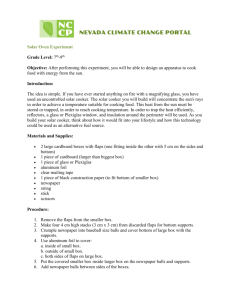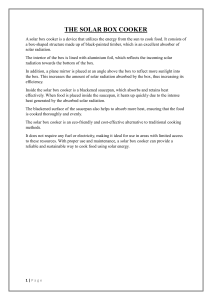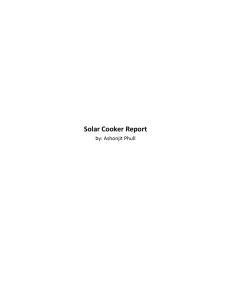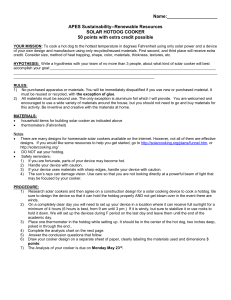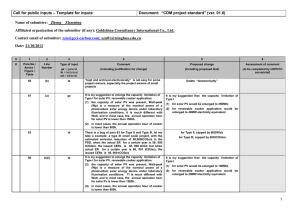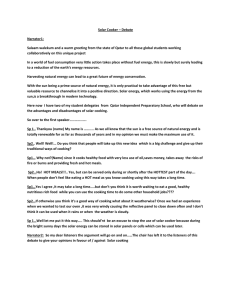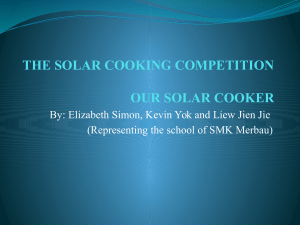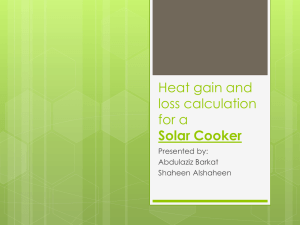Low Temperature Foods - Madison County Schools
advertisement
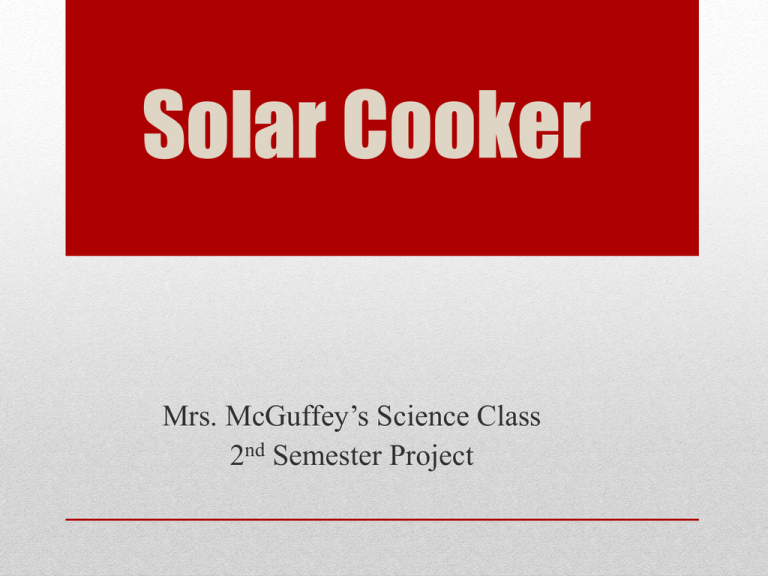
Solar Cooker Mrs. McGuffey’s Science Class 2nd Semester Project • The sun’s energy is very powerful, renewable and free! We use it to create electricity, heat rooms and building and to cook. You will be designing a solar cooker from materials you can, most likely, find in your home. Introduction • • • • • • • • Sturdy tape (duct tape, gorilla tape etc.) Tin foil, mirrors or any shiny, reflective material Cardboard Plastic wrap, plexy glass, glass, or any clear material Scissors Rubber bands Bright sunny day Food item of your choice, uncooked Materials • Slopping sides (about 30 degrees works well) • The aluminum foil is to focus and concentrate the sun’s energy • The sun’s energy is reflected off the foil and focused near the center of the bottom- this is where you need to place your food. • You have the clear “lid” to keep the sun’s energy from escaping. Design- Trapping Solar Energy You can find cardboard from refrigerator boxes at appliance stores like Lowes and HomeDepot. Just make sure its not flimsy cardboard. RECYCLE Construction • • http://www.backwoodshome.com/articles/radabaugh30 .html http://www.wikihow.com/Make-and-Use-a-Solar-Oven • Make sure your test container has black paint on it- the color black will absorb the sun’s energy. • Set your solar cooker outside to directly face the sun. • Prop you solar cooker up with stones or a brace. • Put the container inside with about 2 inches of water and a thermometer. • Measure the temperature before you start. • Measure again every 5-10 minutes and record the results in the chart I provided you with. Testing your Solar Heater • Low Temperature Foods: s'mores, hot dogs, cheese toast, or anything that could cook at lower temperatures. • Higher Temperature Foods: rice, cornbread, baked potatoes, hard boiled eggs Ideas
